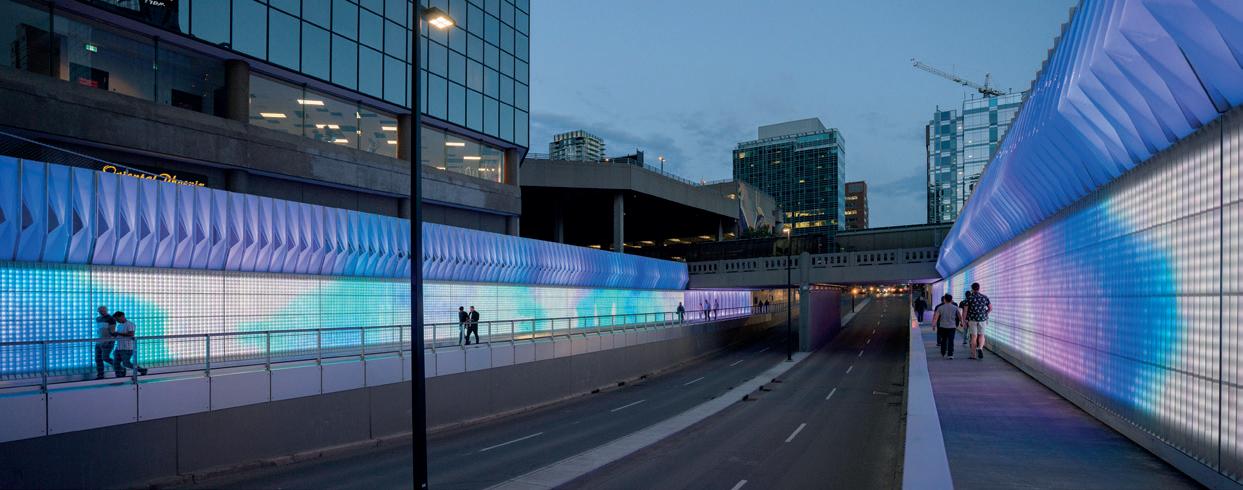TIMBER
TAKING SUSTAINABILITY SERIOUSLY
Timber trends Without wishing to generalise, I’ve found that many architects nowadays do have a predisposition for timber buildings. A sector-wide objective to create incredible timber structures has been the driving force behind the recent leaps and bounds in timber designs. Their ambitions challenge companies, like International Timber, to keep pushing the boundaries of what’s possible. To make these designs viable, we’ve spent five decades engineering out the flaws associated with raw timber, such as its tendency to expand and contract and torsional strength. This has led to huge advances in engineered timber solutions over the last few decades, and methods such as cross-laminated timber or glulam mean core timber structural components can achieve more, spanning farther and carrying heavier loads.
Will Frost, National Product Manager for Engineered and Laminated Products at International Timber, explores the reasons why environmentally-friendly timber is becoming one of the most popular building materials, and gives advice to architects on ways to enhance sustainable timber specification and compliance. INTERNATIONAL TIMBER
I
n Japan, there’s a five-storey timber Buddhist temple that’s stood for more than 1400 years. It’s the pinnacle of sustainable construction and illustrates what an extraordinary building material timber is. The benefits of timber are vast. It’s more affordable, easier to work with and is inherently more lightweight than its modern counterparts. It’s also simpler to transport and handle, which makes it ideal for offsite manufacturing (OSM), providing even further cost and time savings. In fact, this is part of the reason International Timber is now part of Saint-Gobain Off-Site Solutions, as timber is the ideal material for modern methods of construction (MMC). When correctly procured, timber buildings have a reduced carbon footprint, while the raw materials act as carbon sinks and lock in greenhouse gases. For example, a single fivestorey building built from cross-laminated timber products can store approximately 400lbs of carbon for every 3ft 2. Concrete, meanwhile, is responsible for 4 to 8% of the world’s carbon dioxide emissions, and if it was a country, it would rank third after China and the US. For the industry, reaching net-zero carbon means delivering buildings that are carbon neutral in their operation, using materials produced via carbon-neutral processes, and employing carbon-neutral building methods. Making this switch can go a long way towards helping the construction industry reach the legally binding 2050 climate targets. FC&A – MAY – 2021
Keeping compliant To upscale timber construction on a level required to impact on climate change targets, the built environment needs to 24
understand the properties of timber and have full confidence when specifying it. However, we understand and acknowledge there’s a requirement for more support from consultants who are experienced in dealing with timber for applications in buildings. It’s also incredibly important to note that each application of timber has its own set of guidance and regulations. International Timber, and other timber consultants, have vast experience and understanding of coatings and treatments which will assist specified timber in achieving those requirements.
The circular economy Everyone involved in the production of a timber building is accountable for ensuring that timber is responsibly sourced. After all, timber is undoubtedly an outstanding, low-carbon choice for construction but only if it’s been procured in a sustainable and ethical way. Only purchase timber from sustainable sources and aim for full Chain of Custody







